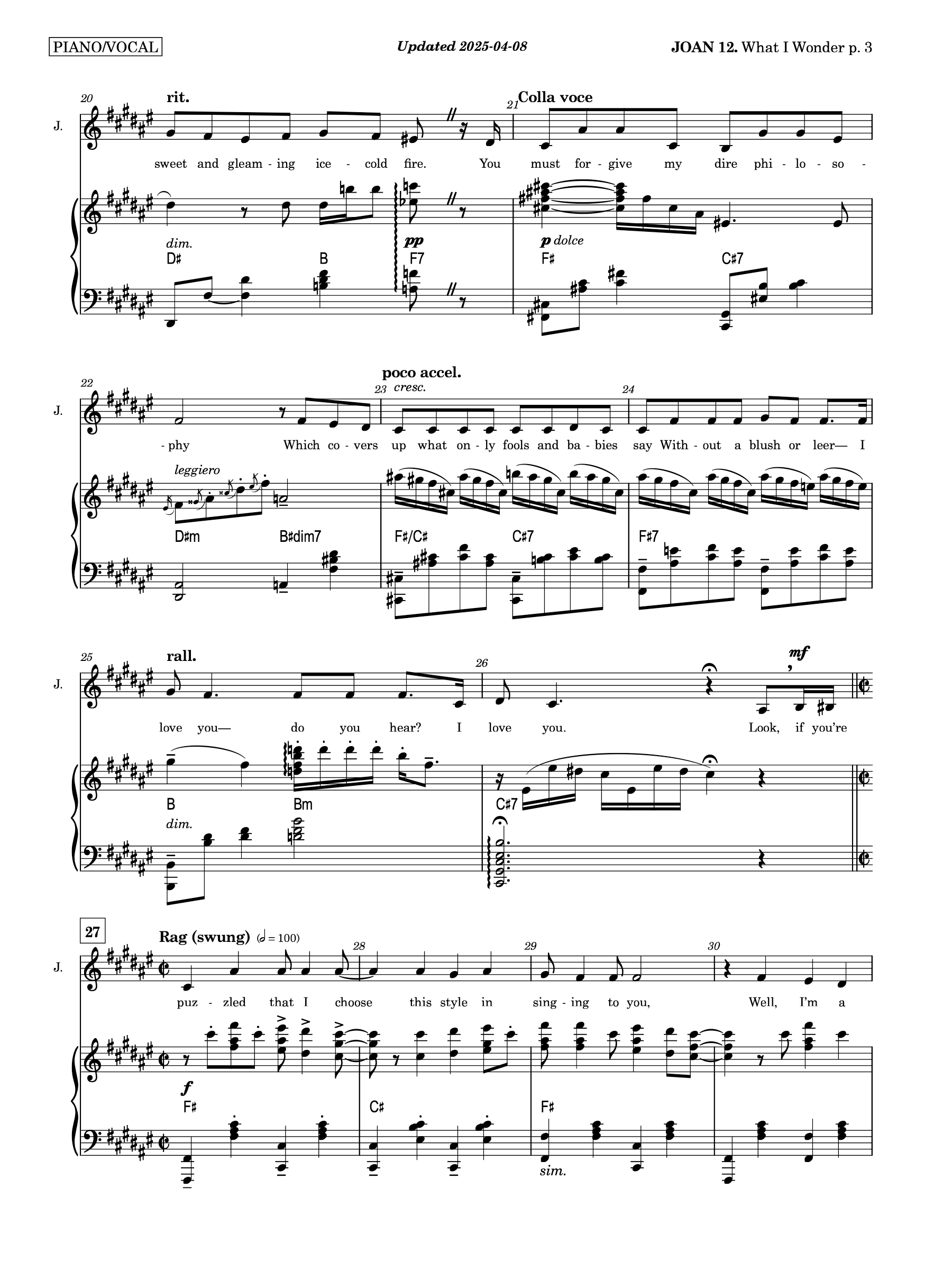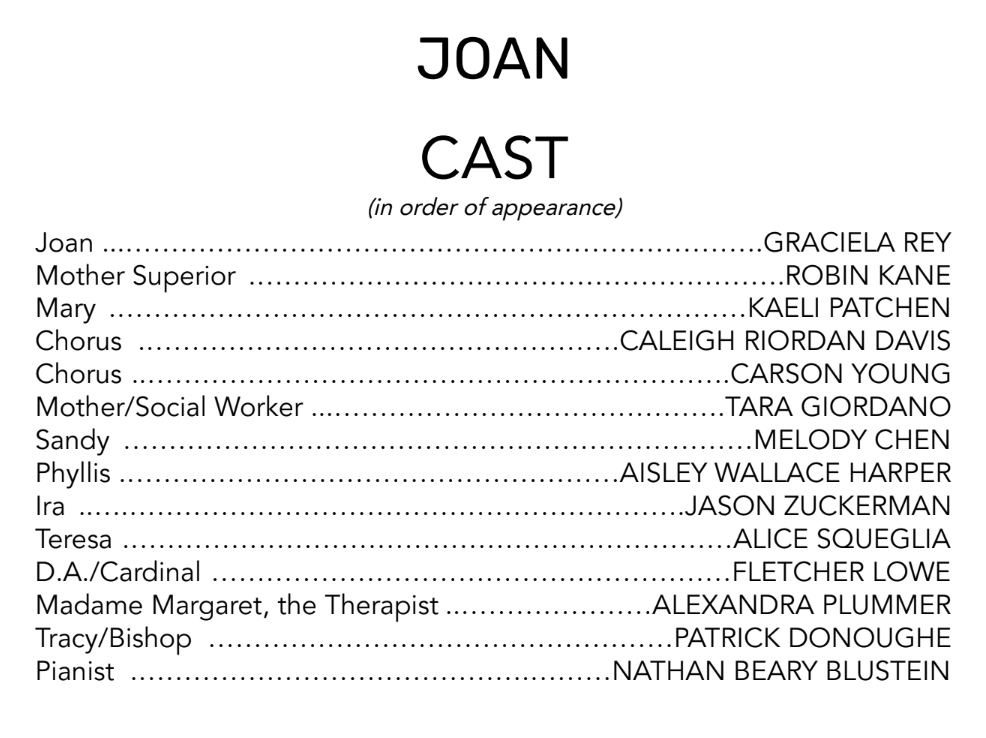Reviving Joan
Bringing back Al Carmines’ musical masterpiece 50 years later
⚠️ THIS PAGE IS UNDER CONSTRUCTION!
Please don’t mind the mess — this is a work in progress!
In theatre, when a production is re-staged, we call it a “revival”. But, more often than not, plays and musicals are “revived” precisely because they are still alive within our collective consciousness. They never really died to begin with. But what does is look like to breathe new life into a piece of art that was nearly lost to time?
In late December 2021, I had arrived early to see the Roundabout revival of Caroline, or Change. Early enough that the doors to the theatre weren’t yet open. No matter, I decided to kill some time browsing through the outdoor stacks of records next door at 54 Vintage Vinyl. After less than a minute of shuffling through old records, I recognized the artwork on one of the albums: Joan. An Off-Broadway musical with book, music, and lyrics by Al Carmines. I recognized it because I had been searching for it for months, without success. And there it was, right in front of me, for $10.
Left: Off-off Broadway Program (1971)
Right: Joan Cast Recording Cover
Despite the fact that Carmines wrote over 30 musicals in his time, only 8 were ever recorded. By this point, I had managed to get my hands on 6 of the those 8 recordings. Only Joan and Pomegranada remained. I had heard one song from Joan, “Go Back”, uploaded to YouTube in it’s lonesome, and I was itching to hear the rest.
Written in 1971, Joan is set in then-contemporary Greenwich Village. The play opens with a young radical woman named Joan, a modern day Joan of Arc, throwing a bomb at a government building, in protest of the Vietnam war. She immediately questions her reasoning for doing so and poses:
“The reasons why you're going to do something disappear when you actually do it. Because by doing it you change. You become something you weren't before; the action has become part of you. And then you need reasons for what you are, not what you do.”
It is this idea that haunts Joan and drives her through the rest of the play. In trying to understand and discover herself, she journeys through New York, and eventually meets The Virgin Mary, with whom she falls in love.
All to say, Joan is a unique piece of musical theatre. When I finally got around to listening to Joan (I love to collect records, but often procrastinate listening to them), I was struck by how the themes still rang true to me as a young Queer person living in America over 50 years later. I was so compelled by the music and the story that I was ready to get in the car and drive to the next production of Joan, wherever it may be. But Joan hadn’t been produced in any capacity since 1975. In fact, it never went into licensing. I quickly realized that if anyone was going bring this musical to life again, it had to be me.
In September 2022, in somewhat of a blur, I sent an email to the folks at Judson Memorial Church, where Carmines had worked as a minister. Judson was previously the home of Judson Poets’ Theatre, an Off-off-Broadway theatre company, also headed by Carmines— nearly all of his work premiered there. While nobody at Judson held the rights to Joan, they kindly put me in touch with Al Carmine’s brother, Ted, the proprietor of his estate. Ted graciously gave me permission to remount Joan for free, as long as I didn’t charge folks for admission. So, within roughly 48 hours of listening to Joan for the first time, I had a agreed to bring it back to life. Yet, I still didn’t quite understand what I was about to undertake.
Ted didn’t have the script or the score, so it was up to me to find them. Still, I wasn’t dissuaded. I had some experience with research libraries and archives, and I knew surely they were out there somewhere. Judson had no copies. Neither did the New York Public Library or the Library of Congress. I was able to track down Ira Siff, an artist who has a storied and fascinating career in his own right. In the original two productions, Siff played Ira, one of Joan’s lovers in her throuple. But he no longer had the script or score.
Eventually, the script turned up at Kent State University in Ohio. It wound up there when a student named Jay Fields collected it for his dissertation on Al Carmines in the 1980s. As it turns out, NYU houses the majority of the Carmines papers (organized under their Judson Memorial collection), which includes the script for Joan. Still, no score.
Eventually, it became apparent that the score never existed to begin with. It was Essie Borden, the original Virgin Mary, who ultimately confirmed Carmines didn’t write music notation, and played everything by ear. He would sit down with the cast at the piano, often with some lyrics scribbled on a napkin, and teach the music section by section. Carmines himself typically played the piano for performances, so there was never any need to write it down. Joan existed entirely in the minds of its cast and creator, until its eventual recording.
Now, this could have easily been the end of things. Luckily, my now-husband, Dr. Nathan Beary Loughstein, is an incredibly gifted musician. When it became obvious that the score didn’t exist anywhere on paper, he began to transcribe the entire score by ear, note by note. This project simply would have been impossible without Nathan’s ability to hear a 50 year old scratchy record and produce pages like this:
Nathan, in total, transcribed over a hundred pages of Piano/Vocal music. And as you can see in the example above, he did so beautifully.
By now a date (April 24, 2023) and a venue (Woolly Mammoth Theatre Company’s rehearsal hall) was set, and rehearsals were soon to begin. Nathan continued transcribing the score though the entire rehearsal process, working into the late hours of the night. We gathered a wonder group of friends and students, and we put everything together in just under two weeks.
“Go BacK” - Staged Reading 2023
Featuring Melody Chen and Aisley Wallace Harper
Joan - Staged reading 2023
Photos courtesy of Kelsey Walker
Despite my instance on over-staging and dipping my toe into choreography, the staged reading went off without a hitch, mostly due to the talent of our cast, and Nathan at the piano. 100 people experienced Al Carmines’ Joan in the basement of a downtown Washington, DC theatre, and I couldn’t have been happier.
Over the next year, I took a break from Joan and moved to New Jersey. Nathan continued to fine-tune the transcription as I continued to dive into the production history of Joan, and any odd details I could find about Carmines and his collaborators.
Eventually, we felt that we had learned more about the material enough that it warranted another visit. So a date and venue was set for a concert, October 20th at The Green Room 42. Again, a cast was assembled, almost entirely by cold calls, and rehearsals were underway.
And again, another 100 people, after getting of their trains and their buses, were able to experience Joan. This time, we were lucky enough to be joined by two original cast members, Essie Borden and Ira Siff, in the audience.
“It’s So Nice” performed by Oliver Richman, Lila Blue, and Mia Mitrano
“I Live a Little” performed by Carmen Ruby Floyd
“What I Wonder” performed by Lila Blue
(feat. Gunnar Manchester, Aryn Geier, Alice Squeglia, Patrick Loughstein and Nathan Beary Loughstein)
As we continue to showcase Joan to more people, one thing is clear: this is not a museum piece. While the phrase “ahead of their time” may be vastly overused, it is entirely accurate to the work of Al Carmines. The themes of Joan have only become more relevant today, sometimes frighteningly so.





